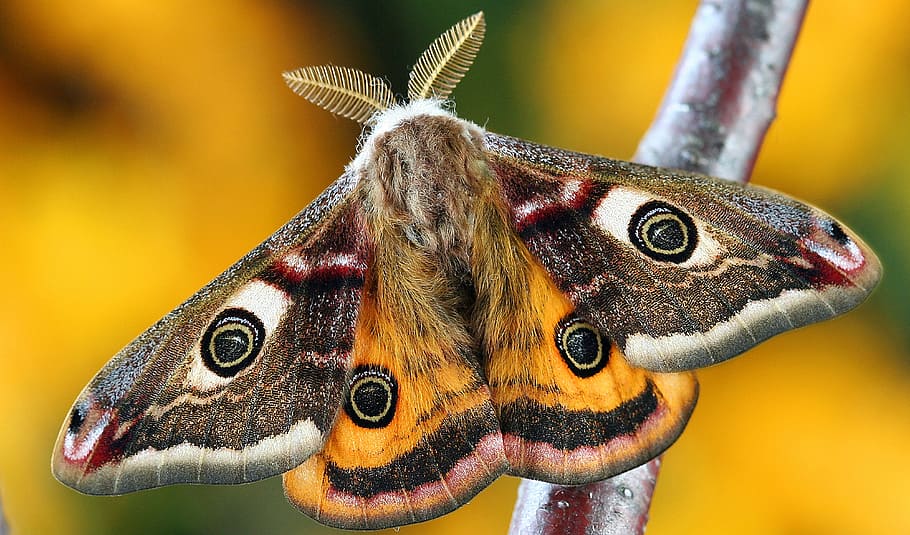


Hawk-Moth Eggs
Source: Wikimedia Commons creative commons license

Mullein Moth Caterpillar
Source: Wikimedia Commons creative commons license

Emperor Moth Pupa
Source: Wikimedia Commons creative commons license

Adult Peacock Moth
Source: Pxfuel creative commons license
Click through each tab below to read about the 4 different stages of life that a moth must experience.
The beginning of a moth’s journey starts when an adult moth lays its eggs. These eggs change from semi-translucent to opaque throughout their development.
After hatching, the young caterpillar escapes from its enclosure though the top, then wriggles its way out to feast upon its own eggshell.
During the caterpillar stage, these insects spend the most of their time eating flower nectar, rotting fruit, and sap to prepare themselves for the next stage of development. During this phase, caterpillars shed their skin multiple times because of their rapid body growth.
When a caterpillar is finished developing, it will search for a safe place to shed its skin one last time to form a Pupa.
The pupa acts as a protective silk case against predators and the elements. Common areas for moths to pupate are foodplants, sticks, or leaves, though some species will spend the pupa stage underground.
Inside the silk case, the caterpillar spends this stage breaking its body down and forming into an adult moth. The casing becomes semi-transparent throughout the stage and the wings become visible from inside.
When the adult moth finally emerges, it will slowly split open the casing and wriggle its way free. The adult moth will also release its waste through a liquid called meconium from the tip of the abdomen. The moth will then need to quickly open its wings before they harden so that the wings form properly.
The task of an adult moth is to find a mate and procreate. Most female moths will lay their eggs inside crevasses of plants that do not contain any other eggs. While some moths lay their eggs in large batches, many moths also lay single eggs at a time. Either way, the eggs are stuck to the plant.
Visit these online resources for more information: